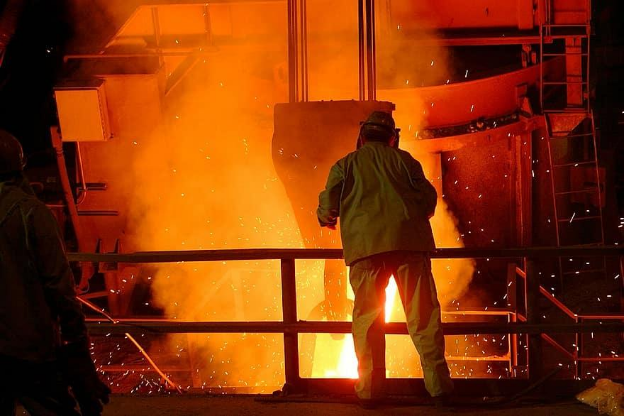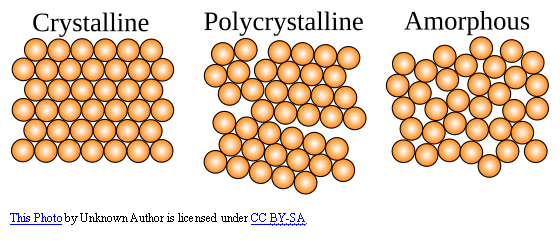Introduce
How glass is made? Why do we see glass everywhere around us? Why is it breakable and versatile? These and so many questions must be coming to your mind. The presence of glass and glass products everywhere must make you curious about how glass is made. One thing that you must keep in mind is that.
“The wonders of glass all come down to melting sand.”
Yes, it’s true.
The chemical transformation of sand results in glass in several forms, shapes, and colors. This blog addresses how glass is made and provides a detailed explanation of the process and properties of glass.

Steps Involved in Glass Manufacturing
The process of making glass is complicated. Makers must take care of every detail in the glass manufacturing process.
From taking accurate proportions of the raw materials to cooling and finishing the product, every detail must be taken care of.
Let’s have a look at the whole process in a step-by-step manner to understand it:
1. Collecting the Raw Materials
Glass manufacturing involves four types of raw materials in it’s making which are:
- Silica (in the form of sand or quartz SiO2)
- Limestone (CaCO3)
- Soda ash (Na3CO3)
- Cullet (which is broken glass)
The process involves collecting these four raw materials separately, then mixing them in fixed proportions. The resulting mixture is called a charge. Adding a cullet or broken glass decreases the charge’s high temperature.
2. Preparing the Batch
Preparing a batch is a simple process. First, the raw materials, the cullet, and the decolorizers are weighed accurately. They are then mixed and put in the grinding machines.
After grinding machines, mixing machines come into play. The mixing machines mix the grounded mixture into a fine powdered form. This uniform, finely powdered mixture is known as a frit or batch.
3. Melting the Glass Batch
This batch is then transferred to the furnace for the melting process. Two types of furnaces are used for the melting of the batch: pot furnaces and tank furnaces. Fireclay or Platinum are the composing materials of these two furnaces.
The melting of the batch in the furnace continues until the emission of carbon dioxide, Sulphur dioxide, oxygen, and other gases.
4. Pot Furnace
Pot furnaces are ideal for small manufacturing setups. Manufacturers who use the mouth-blowing technique for glass-making use pot furnaces. They have the capacity to melt almost eighteen to twenty-one tons of glass.
An advantage of using a pot furnace is that it can simultaneously melt several types of glass. It is a five-chamber furnace. During the melting process, the temperature in the furnace can reach 1600 degrees Celsius.
5. Tank Furnace
As the name indicates, tank furnaces are used in huge setups. They are usually installed in manufacturing units where a continuous flow of molten glass is required. The large amount of molten glass feeds automatic glass-forming machines.
A large tank furnace can have a capacity of two thousand tons, which is enormous. A “Bath” is an integral part of the tank’s structure. It is made of high-quality refractory material.
This high-quality refractory material aims to prevent a chemical reaction between glass and superstructure during combustion. Tank furnaces are also innovative in their fuel consumption.
6. Understanding the Chemical Reaction in the Furnace
In producing glass, understanding the chemical reaction inside the furnace is essential. It is imperative to answer the question :
How glass is made?
So inside the furnace, the combustion continues until the melted glass becomes free from gases like carbon dioxide, silicon dioxide, and others. It results in the formation of scum. Scum is a glass gall which is a combination of undecomposed raw materials and impurities.
The liquid becomes clear. During the temperature 7 seven hundred to twelve hundred degrees Celsius, the liquid gains the viscosity to be molded into different shapes.
Glass Processing
The glass process comprises shaping, annealing, and finishing. Let’s examine each one to gain a clear understanding of how glass is made.
1. Shaping
As the name suggests, this step involves turning glass into various desirable shapes. Thus, glass is first put into molds and automatic machines. The automatic machines shape the glass into wires, sheets, rods, and other shapes.
Two methods can be used to shape glass: hand fabrication and machine fabrication.
Hand fabrication is for small setups. During hand fabrication, glass shaping is done by hand. Machine fabrication is for large-scale setups.
2. Annealing
After shaping, the next step is annealing,Which requires the glass products to be cooled down slowly. The logic behind slow cooling is that rapid cooling might cause cracks in the glass. Extraordinary chambers are used to implement the annealing process.
However, the annealing process is slow, and it might take days for the glass products to cool down.
3. Finishing
The finishing of glass items involves plenty of steps. These include cutting, polishing, grinding, and others. If any unwanted color particles are still present in the glass, decolorizing agents are used to remove them. The decolorizing agents include cerium oxide, neodymium oxide, etc.
Understanding the Chemistry of Glass
The formation of glass is not based on a single composition. The composition depends upon the type and properties of glass required.
Different proportions and formulas produce different electrical, optical, mechanical, and thermal properties of the resulting glass. There is not one single formula for all types of glass.
PROPERTIES OF GLASS
Glass’s versatile properties are the reason behind its versatile applications. glass is evident in almost every industry, from perfume bottle manufacturing to construction, healthcare, automotive, and electronics.
In this section, we discuss the various properties of glass that make it more useful and practical.
1. Transparency
Glass can let light pass through it while maintaining its solid shape and structure. The use of glass in eyeglasses, display screens, and windows is because of this property, i.e., transparency. However, the amount of light passing through glass depends on various factors. These include:
- The thickness of the glass
- The amount of certain additives
- The overall composition of the glass
These factors determine how much light glass will transmit through it or reflect.
The high transparency of perfume bottles ensures that consumers can clearly see the color of the perfume, boosting purchase appeal. gozone achieves flawless transparency by controlling the glass composition (e.g., by reducing iron content).
2. Brittleness
While looking for an answer to the question of how glass is made, you must have read that glass is brittle. Brittleness means that whenever glass is exposed to force, instead of bending or deforming, it breaks. The good thing is that modern technology has significantly enhanced the strength and durability of glass. Tempered glass and laminated glass are examples of glass that are more resistant to external pressures and force.
3. Thermal Resistance
Thermal resistance is a variable property in different types of glass. It depends upon the coefficient of thermal expansion and is inversely proportional to it. Take the example of Borosilicate glass. Borosilicate glass has a low coefficient of thermal expansion, so it offers excellent thermal resistance.
On the other hand, ordinary soda-lime glass offers poor resistance to heat and might break. This is because it has a high coefficient of thermal expansion.
4. Chemical Resistance
Chemical resistance is the reason behind glass’s versatile applications and popularity. Glass is amazing because it is nonreactive to various acids. In addition to acids, it offers high resistance to bases and corrosive substances. Exceptions do occur. For example, hydrofluoric acid can dissolve glass.
The inertness of glass to the alcohols and flavors in perfume makes it ideal for long-term preservation of perfume.Gozone uses borosilicate glass to further resist acidic ingredients.
5. Optical Properties
Properties such as reflection, refraction, and diffraction are known as optical properties. These properties are important in applications such as eyeglasses, lenses, fiber optics, lasers, etc. Engineering can render glass optically controlled.
6. Electrical Insulation
You must be familiar with the term electrical insulation, which refers to the ability of glass to conduct electric current. Glass is an insulator, so it doesn’t let the electric current pass through it. That is why it is used in applications such as protective casings for electronic components and insulation of power lines.

ADVANCEMENTS IN GLASS MANUFACTURING
Now that you know a lot about how glass is made, you must also know about the technological advancements in glass manufacturing.Advancements in glass manufacturing have revolutionized various industries, from construction and automotive to electronics and healthcare.
Technological advancements and innovations have revolutionized the manufacturing of glass products. The glass products that are now manufactured are more energy-efficient, more potent, and multifunctional.
Smart glass and electrochromic glass are examples of advancements in glass manufacturing. Then, we have thermochromic glass and photochromic glass. The former reacts to temperature, and the latter reacts to light.
Advancements have not just impacted the composition of glass but also significantly impacted glass coatings. Various glass coatings give glass products different qualities. For example, self-cleaning glass is the result of coating glass with hydrophilic acid and photocatalytic layers.
Furthermore, various innovative techniques are being used to print glass. One such technique is 3D printing. It creates intricate glass patterns and structures and produces minimal waste.
Glass is undoubtedly an indispensable material in modern society, making it the nucleus of our everyday lives. Combined with modern technology, it has versatile applications in almost every industry.
CONCLUSION
However, the question of how or what glass is made of has a simple answer, i.e., sand. Yet, from the raw materials to the manufacturing of the finished products, the manufacturing of glass is a perfect amalgamation of Science and Art.
The versatile properties of glass, such as insulation, chemical resistance, brittleness, etc, make its applications indispensable in almost every industry. It wouldn’t be wrong to say that every property is a quality of glass.
Technological advancements have revolutionized the use of glass and further enhanced its structural and chemical properties. Glass is the main ingredient in the perfume bottle manufacturing industry, and perfume bottle manufacturers such as Gozone have proved that it is amongst the perfect packaging materials.

